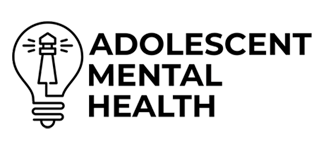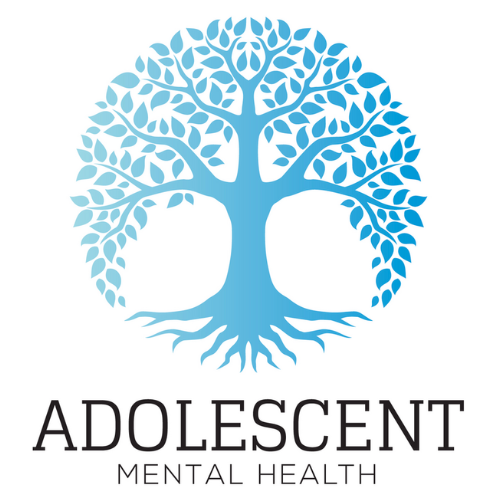PDD vs MDD: Understanding the Differences and Similarities
Depression is a complex mental health condition that takes various forms. Persistent Depressive Disorder (PDD) and Major Depressive Disorder (MDD) are two common types of depression. Each has distinct characteristics that impact individuals differently. This blog explores the key differences, symptoms, causes, and treatment options for these mental health disorders to help individuals and families navigate these challenges.
Key Definitions
What is Persistent Depressive Disorder (PDD)?
PDD, also known as dysthymic disorder, is a chronic form of depression characterized by a persistent feeling of sadness or low mood that lasts for an extended period—at least two years for adults or one year for adolescents. Unlike acute episodes of major depression, PDD symptoms are less severe but remain consistent over time, affecting daily life and overall quality of life.
What is Major Depressive Disorder (MDD)?
MDD, often called clinical depression, is a severe form of depression marked by depressive episodes that significantly impair day-to-day functioning. These episodes last for at least two weeks and include severe symptoms like loss of pleasure in activities, feelings of worthlessness, and thoughts of suicide. MDD’s episodic nature makes it distinct from the chronic nature of PDD.
Key Symptoms

Common Symptoms of PDD
- Persistent feelings of sadness
- Low energy levels
- Difficulty concentrating
- Poor appetite or overeating
- Feelings of hopelessness
- Chronic feelings of dissatisfaction with daily activities
Common Symptoms of MDD
- Intense feelings of sadness or emptiness
- Loss of pleasure in activities once enjoyed
- Significant weight changes or appetite disturbances
- Sleep disorders, such as insomnia or hypersomnia
- Feelings of worthlessness or excessive guilt
- Recurrent thoughts of death or suicide
Differences in Symptom Duration
The duration of symptoms is a key difference between these forms of depression. PDD lasts for years, while MDD manifests in acute episodes. These variations in duration of symptoms influence diagnosis and treatment plans.
Causes and Risk Factors

Genetic Factors in PDD
A family history of mood disorders or a history of depression in close relatives can increase the likelihood of developing PDD.
Genetic Factors in MDD
Numerous studies highlight a genetic predisposition to MDD, particularly when combined with environmental triggers such as adverse childhood experiences.
Environmental Triggers for PDD
Chronic stress, emotional neglect, and childhood maltreatment are common triggers for persistent depressions like PDD.
Environmental Triggers for MDD
MDD often arises after significant life changes, emotional abuse, or traumatic events, such as the loss of a loved one or chronic pain.
Impact on Daily Functioning
How PDD Affects Day-to-Day Life
PDD leads to functional impairment in daily functioning, such as reduced productivity and challenges in maintaining relationships. Its long-term condition makes managing family life and normal activities more difficult over time.
How MDD Affects Day-to-Day Life
MDD episodes often cause severe disruptions to daily functioning. Individuals may struggle with basic self-care, maintaining social interactions, or fulfilling work obligations.
Severity of Conditions
Understanding the Severity Levels in PDD
The chronic, low-grade depression seen in PDD can erode quality of life over time but may not present the acute risk of suicide attempts typically associated with MDD.
Understanding the Severity Levels in MDD
MDD’s severity includes intense depressive symptoms, psychomotor impairment, and cognitive impairment. These severe symptoms often require immediate medical attention and acute treatment.
Diagnosis
Diagnostic Criteria for PDD
A healthcare professional diagnoses PDD based on the persistence of depressive symptoms over a long period. Depression screening instruments are often used to identify chronic, low-grade symptoms.
Diagnostic Criteria for MDD
MDD is diagnosed when depressive symptoms meet the threshold for clinical depression, as defined by the DSM-5. Proper diagnosis requires understanding symptom severity and ruling out other mental health conditions like bipolar disorder or psychotic disorder.
Challenges in Diagnosing Both Conditions
Overlaps between PDD and MDD, such as double depression (when MDD occurs in someone with PDD), can complicate diagnosis and delay effective treatment.
Treatment Options
Treatment Approaches for PDD
- Psychotherapy, such as cognitive-behavioral therapy (CBT) or psychodynamic therapy
- Pharmacological treatment, including selective serotonin reuptake inhibitors (SSRIs)
- Holistic treatment plans, like incorporating a healthy diet, mindfulness practices, and physical activity
Treatment Approaches for MDD
- Antidepressant medications, such as tricyclic antidepressants or serotonin-norepinephrine reuptake inhibitors (SNRIs)
- Acute treatment methods like electroconvulsive therapy (ECT) for severe depression
- Behavioral therapies, including interpersonal therapy and art therapy
Comparing Effectiveness of Treatments
PDD often requires a consistent approach to treatment due to its chronic nature, whereas MDD focuses on alleviating acute episodes with a combination of medication and psychotherapy.
Overlaps and Comorbidities
Understanding Double Depression
Double depression occurs when someone with PDD experiences an episode of MDD, combining the chronic nature of PDD with the episodic nature of severe depression.
Other Comorbid Conditions
PDD and MDD often coexist with anxiety disorders, personality disorders, substance abuse, and sleep disorders, complicating treatment of depression.
Seeking Professional Help
Importance of Early Intervention
Early intervention plays a crucial role in improving outcomes for both PDD and MDD. A licensed therapist or healthcare provider can develop a comprehensive approach tailored to each individual.
How to Access Mental Health Services
Access therapy through mental health professionals, community clinics, or online platforms. Accurate diagnosis and timely treatment options are essential for managing these types of depression.
Supporting Loved Ones
Tips for Friends and Family of PDD Patients
- Encourage consistent therapy sessions and a balanced diet.
- Support engagement in social activities and mindfulness practices.
- Be patient with the long-term nature of chronic depression.
Tips for Friends and Family of MDD Patients
- Recognize the signs of severe depression, such as loss of pleasure or feelings of isolation.
- Offer help with everyday activities and seek immediate support if suicide risk is present.
- Provide emotional support and avoid dismissing their feelings of sadness.
Understanding PDD and MDD helps identify appropriate treatment approaches and support systems for individuals living with these mental health conditions. If you or someone you love struggles with symptoms of depression, seek help from medical professionals or licensed therapists to regain control over daily life and improve overall well-being.

FAQ's
The key difference lies in symptom duration and intensity. PDD is a chronic form of depression where symptoms persist for at least two years in adults, with a lower intensity of depressive symptoms. In contrast, MDD involves intense depressive episodes lasting a minimum of two weeks but can occur sporadically. MDD symptoms are generally more severe and can cause significant disruptions to daily functioning.
Yes, it is possible to experience both conditions simultaneously, a situation known as “double depression.” This occurs when a person with PDD experiences an episode of MDD. Double depression can be particularly challenging as the severity of symptoms from MDD is layered over the chronic nature of PDD. Treatment for double depression often requires a comprehensive approach involving therapy and medication.
Both PDD and MDD are treated with a combination of approaches, though the specifics may vary:
- For PDD: Treatment often focuses on long-term management, including psychotherapy (e.g., cognitive-behavioral therapy) and medications like SSRIs. Lifestyle changes, such as physical activity and a healthy diet, are also beneficial.
- For MDD: Acute treatment methods like antidepressant medications (e.g., SNRIs, tricyclic antidepressants) and therapies (e.g., interpersonal therapy) are common. Severe cases may require electroconvulsive therapy (ECT) or transcranial magnetic stimulation (TMS).
You should seek help if you or someone you know experiences persistent feelings of sadness, hopelessness, or worthlessness that interfere with daily functioning for an extended period. Immediate help is necessary if there are thoughts of self-harm or suicide. Contact a licensed therapist or healthcare provider to obtain a proper diagnosis and develop a personalized treatment plan. Early intervention can improve outcomes significantly.









